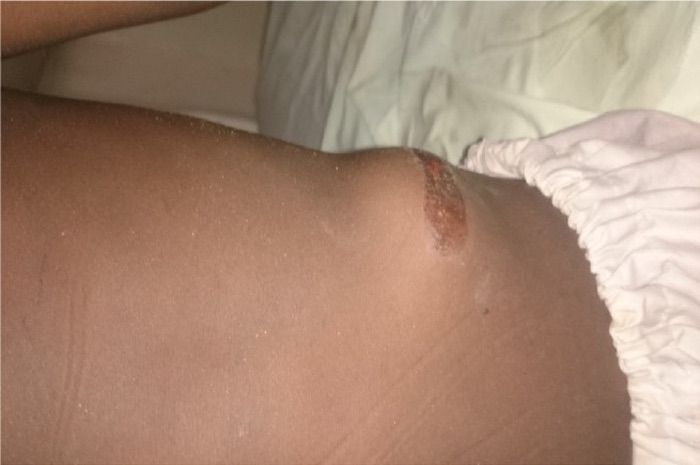Boy Gets Rare 'Handlebar Hernia' from Motorbike Accident

A boy crossing a street in Cameroon got a rare and painful abdominal injury when a motorbike driver lost control and ran into him, according to a new report.
During the accident, the 275-lb. (125 kilograms) motorbike fell on the 8-year-old boy, and its handlebars smashed into his abdomen, giving him an injury that doctors call a "handlebar hernia," his doctors said.
Hernias develop when an organ pokes through the cavity that holds it, said Dr. Valirie Ndip Agbor, a physician who treated the boy at the Ibal sub-Divisional Hospital in Oku, a rural community in northwestern Cameroon, in central Africa, and reported his case. Hernias most commonly occur in the abdomen, for instance when the intestines break through a weakened area in the abdominal wall. [Here's a Giant List of the Strangest Medical Cases We've Covered]
In the boy's case, the motorbike's handlebars caused a rupture in his abdominal muscles and the underlying tissue called the fascia, making a hole internally, which his intestines pushed through, although the skin itself did not break.
Handlebar hernias are uncommon — the doctors found just 29 published reports of them in children over the past 30 years — but if doctors fail to diagnose and treat them properly, these hernias can develop complications or even be fatal, Ndip Agbor said.
"This boy presented with abdominal swelling after the trauma, which could have been a lot of things," Ndip Agbor told Live Science in an email. "Therefore, we advise physicians, parents and guardians to be aware of [this] condition when faced with a similar condition."
When the boy came to the hospital's emergency room, the doctors found that he had a deep cut on his scalp and swelling on the left side of his abdomen, according to the case report, published online March 31 in the Journal of Medical Case Reports.
Sign up for the Live Science daily newsletter now
Get the world’s most fascinating discoveries delivered straight to your inbox.
"He was immediately administered painkillers, and then his laceration was stitched in our emergency department," Ndip Agbor said. The doctors discovered the hernia during a physical examination to determine whether his internal organs, including the intestines and spleen, were injured.
"Two major structures of the abdominal wall, called muscles and fascia [fibrous tissue] prevent protrusion of the internal organs out of the abdominal cavity," he explained. "Any form of weakness in these two structures (muscle and fascia), will result in an abdominal hernia."
To treat the injury, the doctors scheduled a surgical repair of the hernia, known as a herniorrhaphy, the next day.
"The surgery was successful, and the boy was sent home on the ninth day following surgery without complications," Ndip Agbor said.
The report is an important reminder that handlebar hernias can happen in bicycle or motor-vehicle accidents, said Dr. Michael Grosso, a pediatrician and the chief medical officer of Huntington Hospital in Huntington, New York, who was not involved with the Cameroon case.
Moreover, the report highlights the importance of bike safety, Grosso said. About 26,000 children and teenagers sustain serious brain injuries associated with bicycle accidents in the United States every year, according to the Centers for Disease Control and Prevention.
"A very significant number [of these injuries] would be preventable with the proper use of a bicycle helmet," Grosso told Live Science in an email. "Despite campaigns to increase their use, bike helmets are still underutilized."
Original article on Live Science.

Laura is the archaeology and Life's Little Mysteries editor at Live Science. She also reports on general science, including paleontology. Her work has appeared in The New York Times, Scholastic, Popular Science and Spectrum, a site on autism research. She has won multiple awards from the Society of Professional Journalists and the Washington Newspaper Publishers Association for her reporting at a weekly newspaper near Seattle. Laura holds a bachelor's degree in English literature and psychology from Washington University in St. Louis and a master's degree in science writing from NYU.











